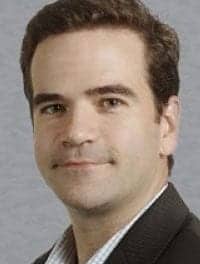
This suggestion went a long way toward increasing the prevalence of genetic screening for CF, but brought with it a host of complications that have yet to be resolved. Topping the list of these challenges are the high standards for informed consent urged by the guidelines. Meeting this standard has proved a difficult goal to achieve in the hectic world of practicing clinicians.
One of the more common methods for informing patients is through printed materials. While these have been shown to be reasonably effective for substantial numbers of patients, these documents often fall short of the full explanation required for a layperson to make the best decision possible.
Personalized Communication
Ideally, counseling would take place on two separate occasions, both during pretest education and counseling and again after test results have been returned, because unlike many other routine tests, a CF screening does not return a clear-cut yes or no answer.
“Cystic fibrosis is a highly complex genetic disease and one in which affected individuals can, depending on which mutations and polymorphisms they carry, exhibit various degrees of severity of the disease; so testing is not just a simple positive or negative result,” says Bob Proulx, vice president, marketing, at Nanogen Inc. “It’s a very intricate set of mutations. One of the goals is to screen reproductive couples, preferably preconception, in order to evaluate and educate them on the risk of having a child with CF.”
Unfortunately, the availability of access to individuals capable of interpreting and explaining these complicated results is limited. Busy practitioners, including nurses, simply don’t have the time it takes to try to explain CF to potential parents.
Not only are time constraints an issue, but the complex nature of CF translates to a gray area for many physicians who, even if given additional time, would lack the depth of knowledge required to provide patients with the information necessary to make an informed decision.
“Testing for cystic fibrosis is unusually complicated genetically, because there are over 1,000 mutations, and information about each of those mutations is evolving rapidly,” says Norman Fost MD, MPH, professor of Pediatrics and Bioethics, director of the Program in Bioethics and vice chair for the Department of Medical History and Bioethics at the University of Wisconsin School of Medicine and Public Health. “Some of these mutations are associated with serious disease, and some are not associated with any disease at all—and it’s almost impossible for an obstetrician in an office to keep up with that.”
While the level of understanding may be low in physicians, the general public has even less comprehension of the genetics and probability involved. In addition, most people are unaware of the specifics of the disease and what ramifications the test results might hold for them.
“Patients know little or nothing about cystic fibrosis and this is a huge problem, because before you can decide if you want to be tested or what you want to do with a positive result, you need to know about the disease you’re dealing with,” Fost says. He adds that parents unwilling to act on the information provided might as well not even subject themselves to testing. “Whether or not you want to be tested and undergo some of these risks would depend a lot on whether you think you’d be interested in changing your behavior—namely, having a prenatal diagnosis or aborting an affected fetus.”
Adequate counseling is also often absent because of a lack of genetic counselors. “There is quite a severe shortage of genetic counselors both in this country and throughout the western world,” says Philip M. Farrell, MD, PhD, dean, University of Wisconsin School of Medicine and Public Health (Madison), vice chancellor for Medical Affairs, and Robert Turell Professor in Medical Leadership. “Because of this, office practitioners—whether they be family physicians who deal with pregnant women or obstetrics and gynecological specialists—don’t have genetic counselors available who can discuss the situation before and after the testing.”
The shortage may be due in part to the medical industry’s relatively recent acceptance of molecular testing. “In general this is something new for a lot of hospitals and services that are just starting to do more and think more in terms of genetic diseases and how to put the infrastructure together to provide the genetic-counseling services that go with the testing,” says Graham Lidgard, senior vice president of research and development at Nanogen.
Flow of Information
Complicating the issue even further is identifying whose responsibility it is to pass along information and counseling. “Testing companies can and should do a better job of sending informational materials that explain and interpret the results for the doctors, as well as providing doctors with materials to pass along to their patients,” Fost says. He advocates making use of the Internet or CDs to provide detailed, interactive counseling. Patients who access and review the information could be tracked by the health care provider, adding a layer of protection for a doctor or testing facility against litigation should test results lead to unnecessary medical procedures, such as amniocentesis. “Providing clear and useful materials, not just for the doctor but for the patient, is not expensive to do, so there’s no reason for that not to occur.”

“We actively provide information about the critical components of testing, such as testing indications, limitations of the testing, the method used, and result interpretation,” says Elaine Lyon, PhD, medical director, Molecular Genetics Laboratories, ARUP Laboratories, and an assistant professor (clinical) in the Pathology Department at the University of Utah (Salt Lake City). “Whether this information gets to physicians or patients is another question, because as a reference lab, your clients are other laboratories, and you may not always have access to physicians.”
Benefits of Earlier Detection
In addition to enabling patients to better interpret test results, counseling can often help future parents determine whether or not they are even interested in being tested. In addition to uncertain test results, the presence of a cystic fibrosis transmembrane conductance regulator (CFTR) mutation—the gene identified as the cause of CF—often brings issues to the forefront that patients may not want to directly address.
“There still is the option of terminating a pregnancy if the couple so chooses, but that is being used less as cystic fibrosis is no longer considered a deadly childhood disease,” Lyon says.
The past 2 decades have seen great strides made in the treatment for CF. While past prognoses were often grim, today it’s not unusual for individuals with cystic fibrosis to live into their 40s and 50s, and many are able to do so leading normal lives, with no effect on IQ and relatively little effect on other critical organs as a result of the disease.
As the outlook for those afflicted with CF brightens, many feel the emphasis on preconception screening will be replaced by the growing practice of using genetic testing for early detection of the disease in newborns.
“According to physicians with whom I’ve talked, diagnosing—or ruling out—cystic fibrosis in young children takes time for the process,” Lyon says. “An infant can be in and out of the hospital for several months before a diagnosis of CF is made, so an earlier diagnosis potentially can save health care dollars, as well as benefit the patient.”
Not only will health care funding and parental nerves be spared, but as is the case with the majority of ailments, early diagnosis means earlier treatment and better patient outcome.
According to Farrell, newborn screening for CF is performed regularly in about 20 states, with more states continuing to incorporate it in the regular screening panel given to newborns. “By the end of the decade it will probably be done in all states, accomplishing early, pre-symptomatic diagnosis and offering children better care and better outcomes.”
Looking at the Details
The vast number of CFTR mutations in existence means that a comprehensive assay would be next to impossible. Instead, many researchers are focusing on further investigation of the known mutations.
“There exists so many variants that we don’t understand well their clinical consequences. I think one of the challenges for the future will be to figure out which mutations are considered mild and which are severe,” Lyon says. “I support the panel that ACMG and ACOG have developed, and if any mutations are added to the existing panel, there needs to be a very good reason above simply increasing the number of mutations. Detecting mutations that don’t have a clear clinical significance could result in unnecessarily frightening a couple who, for example, is expecting a baby and receive a positive result, without understanding that the mutation may be mild and result in an adult disease of pancreatitis rather than traditional cystic fibrosis.”
Identifying which mutations are most likely to cause severe illness will empower parents and clinicians to make thoroughly informed decisions about testing and treatment options. To many, this information holds far more promise than adding additional mutations to the existing panel simply for the sake of increasing the numbers.
“People talk about the number of the markers like it’s some sort of arms race, but we’re following the ACOG and ACMG recommendations of the panel of 23,” Lidgard says.
His colleague, Proulx, concurs. “As vendors, we need to be thoughtful about what the experts in the industry are saying they need in order to provide quality standard of care. And in the case of cystic fibrosis, it doesn’t appear that more necessarily means better.”
Because some CTFR mutations have been identified in only a handful of people, expanding panels to include every variation makes little sense either practically or financially.
“We’re at the point where when you’re looking at 60 to 70 mutations, you’ve pretty much reached the limits of what’s useful for the United States; and at 90-plus mutations, you’re covering close to 87% of the US population,” says Richard Janeczko, PhD, executive vice president and chief scientific officer, TM Bioscience. He notes that working to achieve higher numbers is a statistically moot point. “Adding another hundred mutations would only shift that number up by about a half a percent, and therefore the return would diminish further.”
“The issues are completely different when testing a child who has been diagnosed with CF (by positive sweat chloride), as opposed to testing for population screening. In the cases of a confirmed CF diagnosis, we start with the panel, but, if negative, we will recommend full CFTR gene analysis, which will identify nearly all the greater than 1,000 mutations,” Lyon says. “We still have the problem of not always being able to interpret what we find, but since the child has CF, whatever we find is more likely to be significant.”
Dana Hinesly is a contributing writer for Clinical Lab Products.


